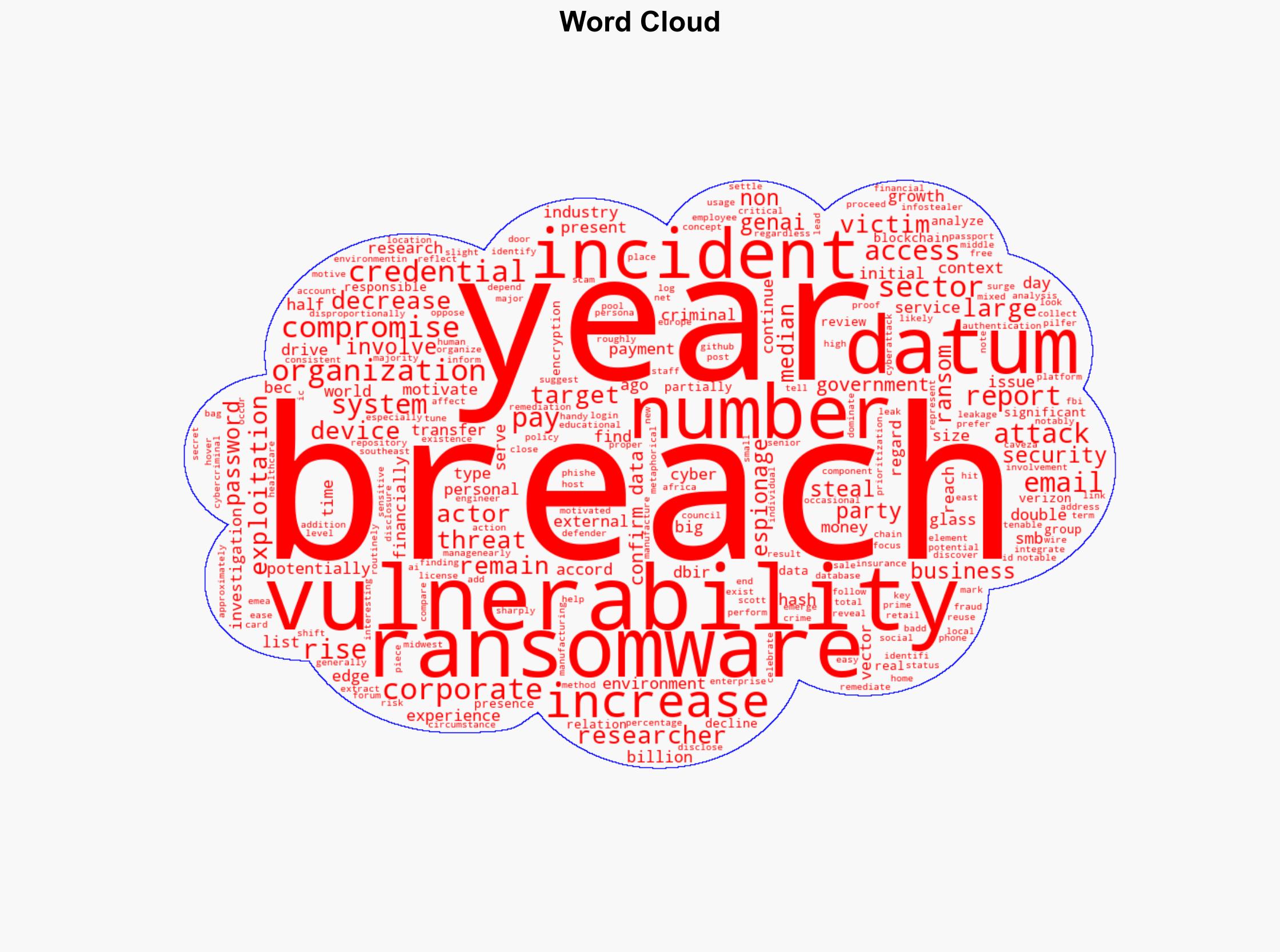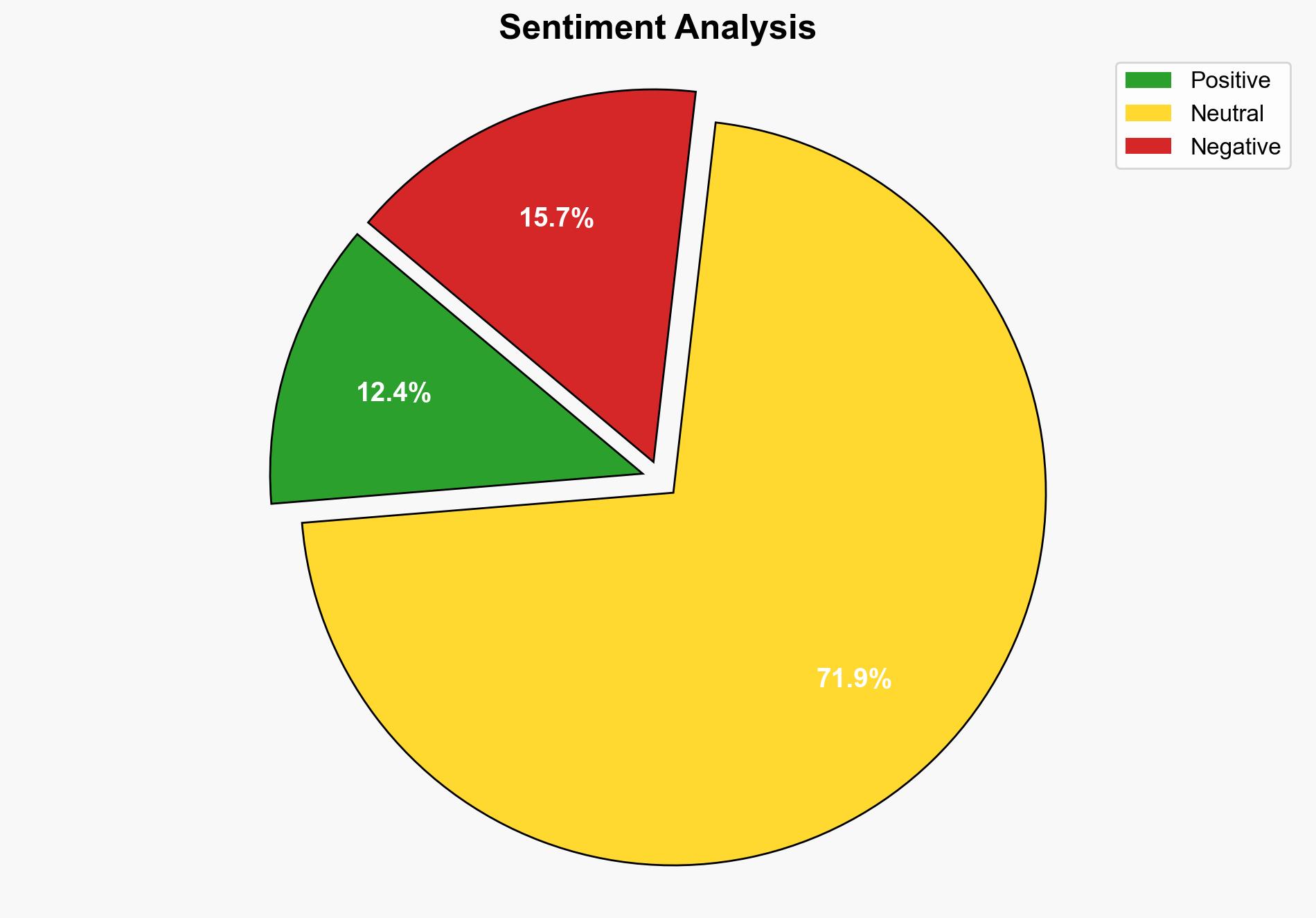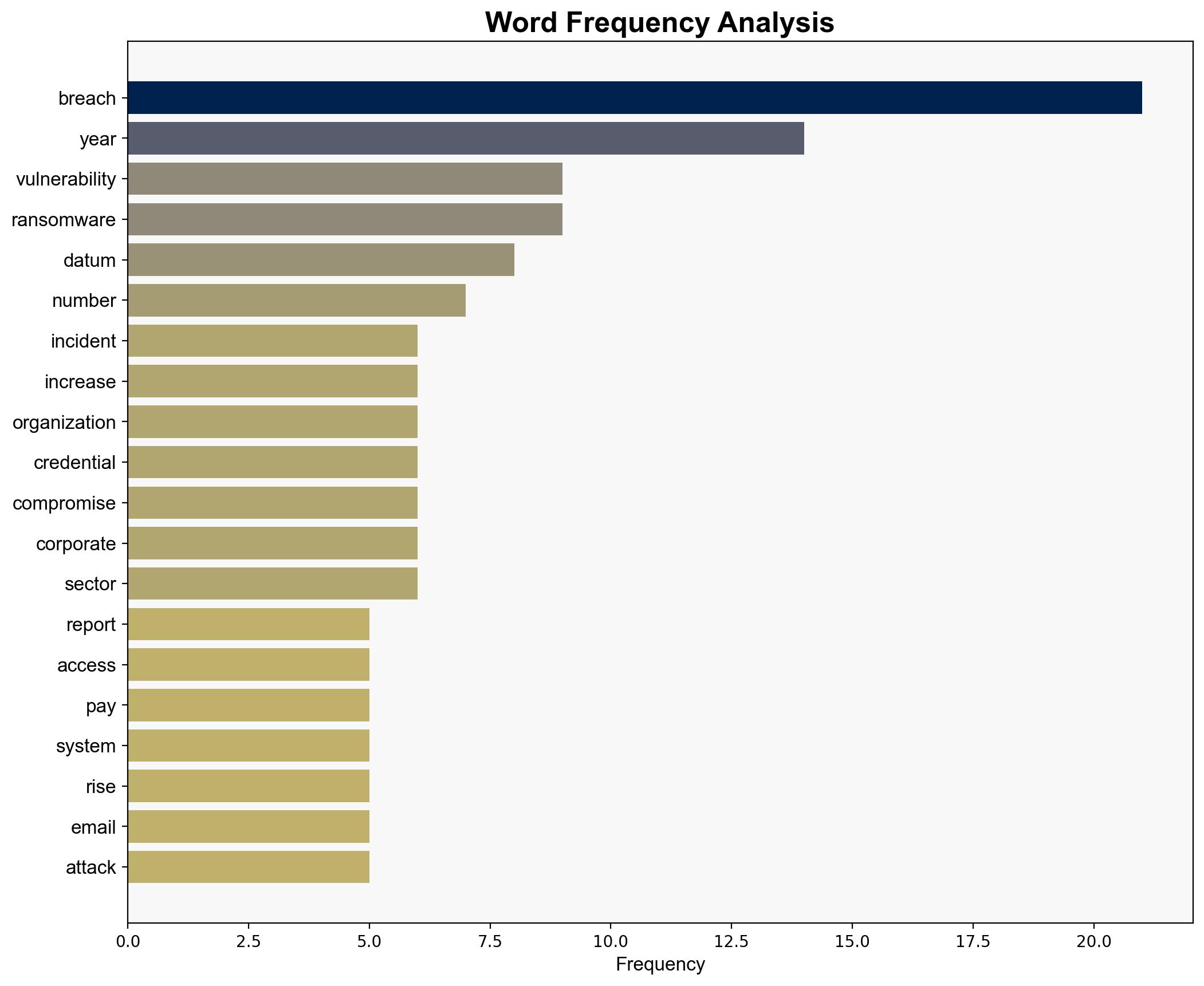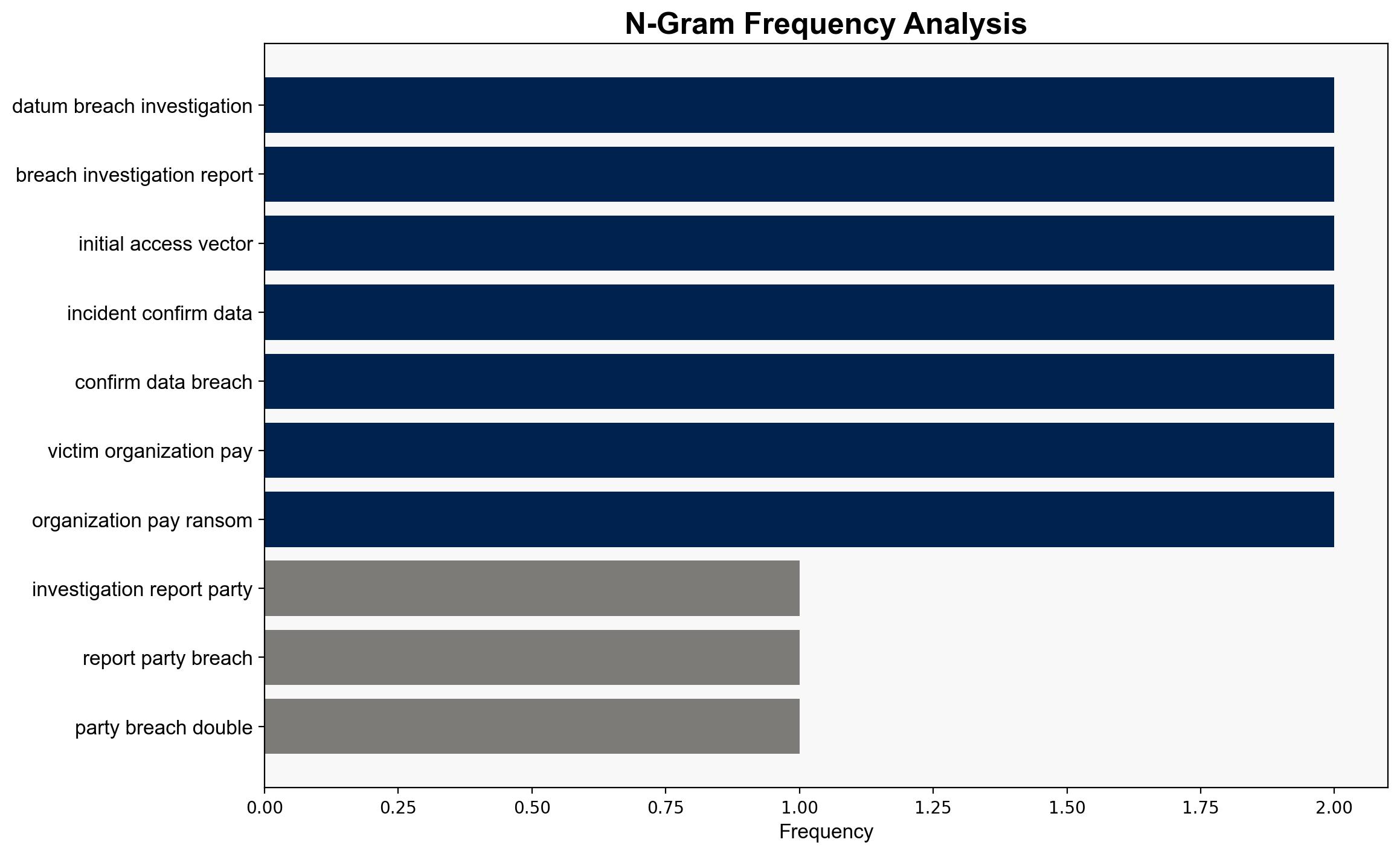2025 Data Breach Investigations Report Third-party breaches double – Help Net Security
Published on: 2025-04-23
Intelligence Report: 2025 Data Breach Investigations Report Third-party breaches double – Help Net Security
1. BLUF (Bottom Line Up Front)
The 2025 Data Breach Investigations Report highlights a significant increase in third-party breaches, which have doubled compared to previous years. This trend underscores the growing exploitation of vulnerabilities as initial access vectors. The report also notes a rise in ransomware incidents, although the median ransom payment has decreased. Small and medium-sized businesses (SMBs) are disproportionately affected by ransomware. The use of stolen credentials remains a prevalent method for data breaches, with phishing and vulnerability exploitation on the rise. The emergence of generative AI (GenAI) poses potential risks for corporate data leakage. Strategic recommendations include enhancing third-party risk management, prioritizing vulnerability remediation, and strengthening credential security.
2. Detailed Analysis
The following structured analytic techniques have been applied to ensure methodological consistency:
Analysis of Competing Hypotheses (ACH)
Alternative explanations for the increase in third-party breaches include heightened targeting of supply chains and inadequate security measures by third-party vendors. Evidence supports the hypothesis that vulnerabilities in third-party systems are a primary driver.
SWOT Analysis
Strengths: Increased awareness and reporting of breaches. Weaknesses: Insufficient third-party risk management. Opportunities: Adoption of advanced threat detection technologies. Threats: Rising sophistication of cybercriminal tactics.
Indicators Development
Key indicators include increased phishing attempts, unusual lateral movement within networks, and unauthorized access attempts from third-party systems.
3. Implications and Strategic Risks
The doubling of third-party breaches poses significant risks to supply chain security and organizational integrity. The trend may lead to increased regulatory scrutiny and potential financial losses. The rise in ransomware and credential theft highlights the need for robust cybersecurity frameworks. Emerging threats from GenAI could exacerbate data leakage risks, necessitating proactive measures.
4. Recommendations and Outlook
- Enhance third-party risk assessments and enforce stringent security standards for vendors.
- Prioritize patch management and vulnerability remediation, especially for edge devices.
- Implement multi-factor authentication and regular credential audits to mitigate credential theft.
- Monitor GenAI usage within corporate environments to prevent data leakage.
- Scenario-based projections: Best case – Improved third-party security reduces breach incidents. Worst case – Continued rise in breaches leads to regulatory penalties. Most likely – Gradual improvement with increased adoption of security measures.
5. Key Individuals and Entities
Scott Caveza, a senior staff research engineer at Tenable, provides insights into the critical vulnerabilities affecting cybersecurity.
6. Thematic Tags
(‘national security threats, cybersecurity, counter-terrorism, regional focus’, ‘cybersecurity’, ‘counter-terrorism’, ‘regional focus’)





